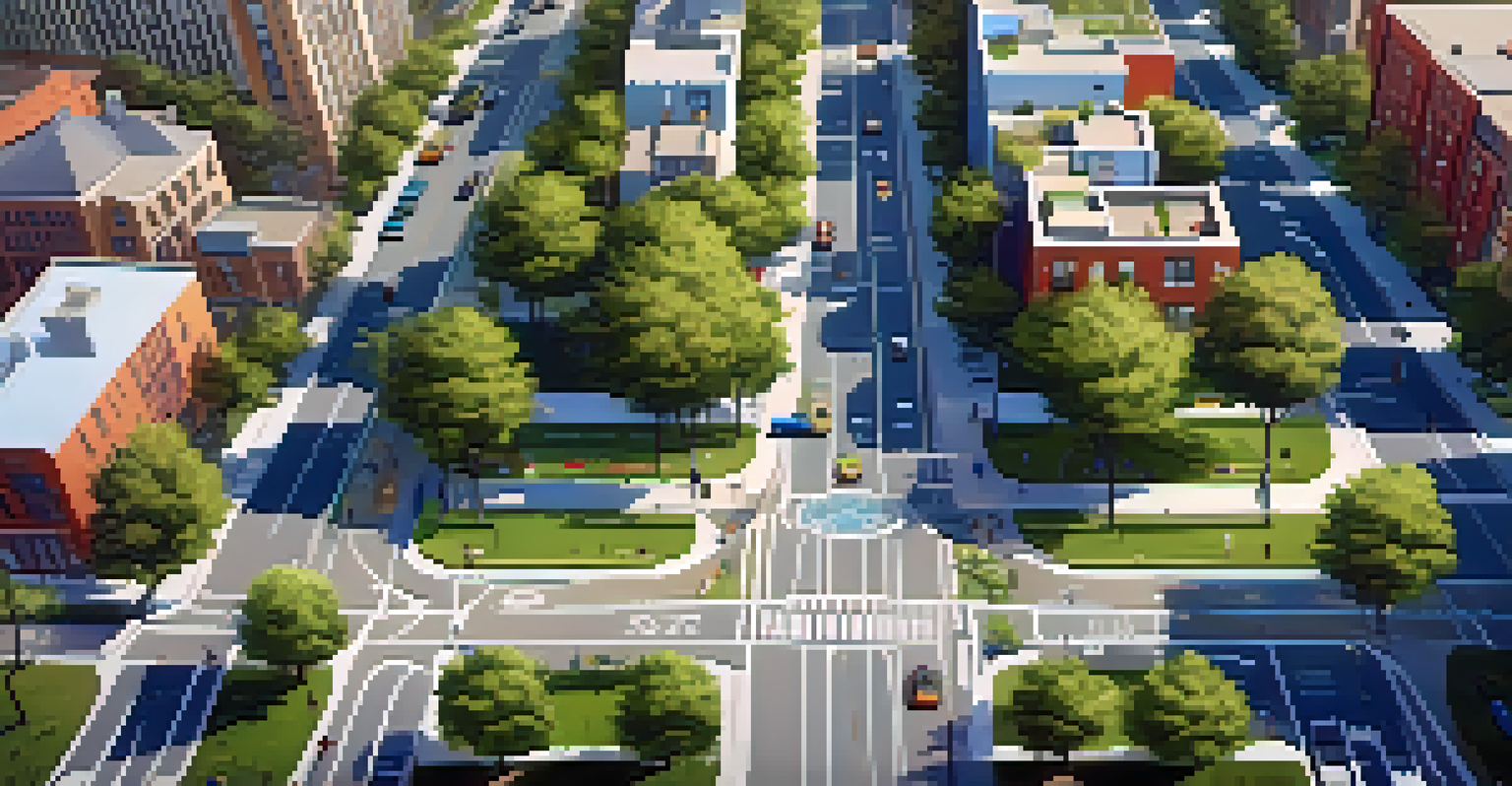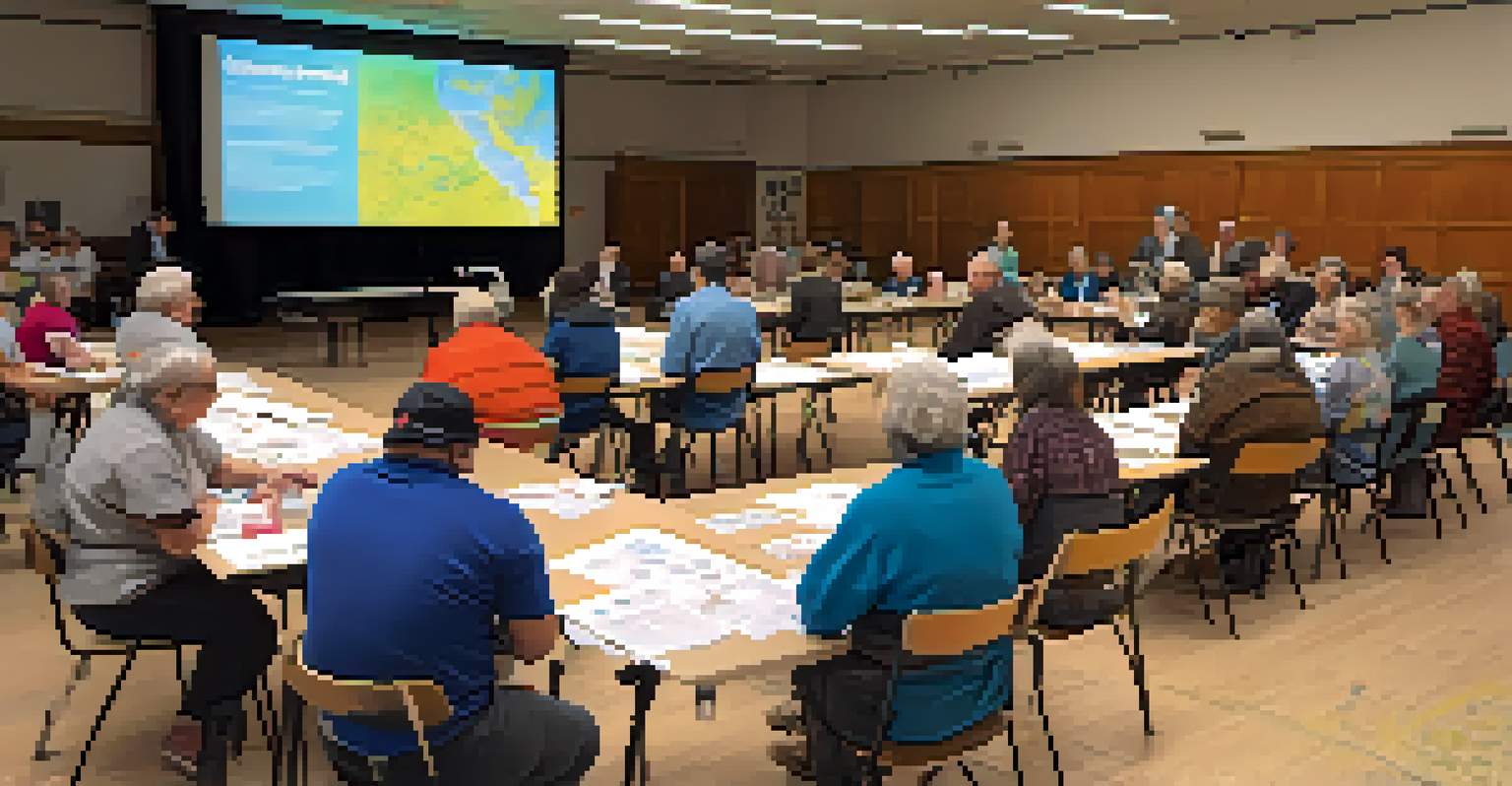Zoning Laws and Their Impact on Transportation Equity

Understanding Zoning Laws and Their Purpose
Zoning laws are regulations that dictate how land can be used in different areas. They help shape communities by determining whether a location can be residential, commercial, or industrial. This is crucial for urban planning, as it aims to create organized and functional spaces for living and working.
Zoning laws are not just about land use; they are about social equity and community health.
By controlling land use, zoning laws can either promote or hinder access to essential services, public transportation, and amenities. For instance, a well-planned zoning ordinance might encourage mixed-use developments, allowing people to live, work, and play in the same area. This proximity can significantly enhance transportation equity by reducing reliance on cars.
However, when zoning laws are overly restrictive, they can lead to segregation and inequitable access to transportation options. For example, if affordable housing is zoned far from public transit, lower-income residents may struggle to commute to jobs, further entrenching socioeconomic disparities.
The Connection Between Zoning and Transportation Access
Transportation access is closely linked to zoning laws, as these regulations influence how and where transportation infrastructure is developed. Areas that are zoned for higher density often receive better public transit options due to increased demand. This means that the design of a community can directly affect its residents' mobility and access to jobs.

Moreover, zoning can either facilitate or obstruct the development of bike lanes, sidewalks, and public transit stations. For example, if a city prioritizes car-centric zoning, it may neglect pedestrian-friendly infrastructure, making it harder for residents to navigate without a vehicle. This lack of options disproportionately affects those without cars, often low-income communities.
Zoning Affects Community Access
Zoning laws significantly influence land use, impacting residents' access to essential services and transportation options.
In contrast, inclusive zoning practices that promote diverse land uses can lead to more integrated transportation networks. When communities are designed with transportation equity in mind, everyone has the opportunity to access schools, jobs, and healthcare, regardless of their income or mobility.
Case Studies: Cities Leading in Transportation Equity
Cities like Portland and Minneapolis have made significant strides in integrating zoning laws with transportation equity initiatives. These cities have adopted policies that encourage mixed-use development and prioritize public transportation access in their zoning codes. As a result, they've seen improved access to jobs and services for all residents.
Transportation is the great equalizer; without it, communities cannot thrive.
For instance, Portland's emphasis on walkable neighborhoods and bike-friendly infrastructure has resulted in a transportation system that accommodates various modes of travel. This approach not only benefits the environment but also enhances the quality of life for residents, particularly those who rely on public transit.
On the other hand, cities that have failed to consider transportation equity in their zoning decisions often face challenges. For example, urban areas with restrictive zoning may find that their transit systems are underutilized or inefficient, leaving many residents stranded without adequate options.
Challenges in Creating Equitable Zoning Laws
Despite the clear benefits of equitable zoning laws, numerous challenges exist in their implementation. One significant barrier is the resistance from local residents who may oppose changes that they believe could alter their community's character. This phenomenon, often referred to as NIMBYism (Not In My Backyard), can stifle efforts to create inclusive zoning policies.
Additionally, existing zoning codes may not reflect the diverse needs of the community. For example, outdated regulations might prioritize single-family homes over affordable multifamily housing, limiting options for low-income families. This can exacerbate transportation inequities as those families are pushed further away from job centers.
Transportation Equity is Essential
Integrating transportation equity into zoning practices promotes better access to jobs, healthcare, and schools for all community members.
Furthermore, there is often a lack of awareness or understanding of how zoning laws affect transportation equity among policymakers and the public. Without comprehensive education and engagement, meaningful reforms may struggle to gain traction, leaving vulnerable populations at a disadvantage.
The Role of Community Engagement in Zoning Decisions
Community engagement is essential in developing zoning laws that promote transportation equity. When residents are actively involved in the planning process, they can voice their needs and preferences, ensuring that zoning decisions reflect the community's desires. This participatory approach can help create more inclusive and equitable urban environments.
For example, towns that host workshops or public forums to discuss zoning changes often uncover valuable insights about the needs of various demographic groups. Engaging with community members can reveal gaps in transportation access that policymakers may not have considered otherwise.
Moreover, fostering collaboration between local governments, transportation agencies, and community organizations can yield innovative solutions. By working together, stakeholders can develop zoning strategies that prioritize equitable transportation access, ultimately benefiting the entire community.
Innovative Solutions for Transportation Equity in Zoning
Innovative zoning solutions can significantly improve transportation equity, such as implementing inclusionary zoning policies. These policies require developers to set aside a portion of new housing units for low- and moderate-income residents, ensuring that affordable housing is available near public transit. This approach helps to bridge the gap between housing and transportation access.
Another solution is the adoption of Transit-Oriented Development (TOD) principles, which promote higher-density living near transit hubs. By concentrating development around public transport, cities can enhance access to jobs and services for residents who rely on these options most. TOD not only supports transportation equity but also reduces congestion and environmental impact.
Community Engagement Drives Change
Active community involvement in zoning decisions ensures that policies reflect local needs, fostering more equitable urban environments.
Additionally, cities can explore zoning incentives for developers who incorporate sustainable transportation options, such as bike parking and pedestrian-friendly designs. By rewarding these practices, local governments can encourage the creation of communities that prioritize mobility for everyone, regardless of their socioeconomic status.
The Future of Zoning Laws and Transportation Equity
As cities continue to evolve, the future of zoning laws will play a crucial role in shaping transportation equity. Increasing awareness of social justice issues and the importance of access to transportation is driving change in urban planning. Policymakers are beginning to recognize that equitable zoning can lead to healthier, more connected communities.
Emerging trends, such as the rise of remote work and shifts in transportation modes, also present opportunities for reimagining zoning regulations. For example, as more people work from home, there may be less need for commercial zoning in certain areas, allowing for a greater mix of residential and commercial spaces.

Ultimately, the success of zoning laws in promoting transportation equity will depend on the commitment of stakeholders—from city officials to community members—to prioritize inclusivity and accessibility in their planning efforts. By embracing innovative solutions and engaging with diverse voices, cities can create a more equitable future for all residents.